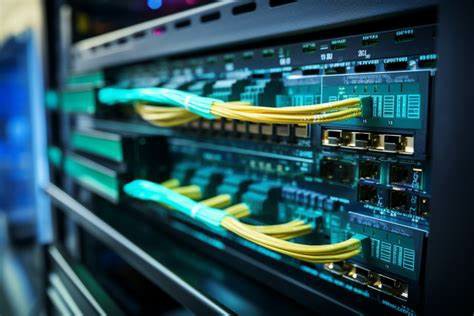Global IT supply chain
International transportation + IT O&M outsourcing + self-owned backbone network
The bandwidth of a rented enterprise server directly affects the access speed of websites or applications, significantly impacting user experience and the smooth operation of business. So, how do you select the right bandwidth rental plan for your enterprise, choose the appropriate network lines, and distinguish between the pros and cons of shared vs. dedicated bandwidth? Let’s dive into the details.

Corporate websites primarily showcase brand image and product information. For small enterprises with low traffic and simple content (mainly text and images), a 5–10Mbps bandwidth usually ensures smooth browsing. As the enterprise grows, adding video displays, customer case studies, or other rich content—and with daily traffic reaching hundreds of visits—a 20–50Mbps bandwidth becomes a more reliable choice, ensuring fast page loading and leaving a positive impression on potential clients.
E-commerce platforms handle high transaction volumes, numerous product images, and real-time updates for inventory and prices, with traffic surging during promotions. For startups processing under 100 orders daily, a 30–50Mbps bandwidth supports daily operations, while a 100–200Mbps bandwidth can handle small promotions. Mid-to-large e-commerce platforms, however, need at least 500Mbps or even multi-Gbps bandwidth during peak shopping festivals like “Double 11” or “618” to avoid page lag and payment delays, ensuring seamless shopping experiences for millions of concurrent users.
Online courses require real-time video streaming, demanding stable and high-speed bandwidth. Small niche training platforms with dozens to hundreds of concurrent users can use 100–200Mbps to ensure clear, smooth playback. Large comprehensive online education platforms with multi-disciplinary courses and thousands of concurrent users during peak times need 500Mbps+ bandwidth, combined with a content delivery network (CDN) to reduce latency and provide a local-classroom experience nationwide.
Both web games and large client-based games rely on low latency to retain players. Small casual gaming platforms with hundreds of concurrent users can use 100–300Mbps bandwidth with high-quality lines for instant response. Popular large-scale online games, especially those with global servers and tens of thousands of concurrent players, require multi-Gbps or higher bandwidth, paired with global distributed nodes, to prevent lag and disconnections, meeting players’ demands for ultimate performance.
Common single-provider lines include China Telecom and China Unicom. Telecom lines dominate in southern China with strong stability, ideal for businesses targeting southern clients—e.g., a southern agricultural e-commerce company using Telecom lines to ensure fast regional access at low cost. Unicom lines excel in northern China, suitable for businesses like a northern industrial parts manufacturer serving clients in northern cities, meeting their website and communication needs efficiently.
Dual-provider lines integrate Telecom and Unicom resources, enabling intelligent automatic switching. They suit national businesses requiring seamless north-south connectivity—e.g., a national chain restaurant’s online ordering platform, ensuring fast order placement and query responses for users across China, eliminating access delays or failures due to provider differences.
BGP lines use advanced routing to automatically optimize data paths based on real-time network conditions, enabling high-speed interconnection across different carriers. Large multinational enterprises and leading internet companies often choose BGP lines. For example, an international financial institution expanding in China uses BGP lines to ensure global users access its online services efficiently, free from regional or carrier restrictions.
Shared bandwidth allows multiple users to share a common pool, offering low costs—ideal for small businesses with stable traffic and moderate stability needs. A startup design studio, for instance, can use shared bandwidth to display work and handle inquiries smoothly, saving costs for business growth. However, during peak hours, sudden traffic spikes from other users in the shared pool may cause temporary lag, impacting user experience.
Dedicated bandwidth is exclusively allocated to one user, ensuring full control, high stability, and guaranteed speed. Enterprises with strict requirements for business continuity and response—such as large e-commerce platforms or financial institutions—depend on dedicated bandwidth. During “618” promotions, for example, dedicated bandwidth ensures millions of users can shop, load pages, and pay without disruptions. While more expensive, businesses must evaluate the ROI based on their scale and needs.
Ogcloud, a veteran IDC provider with over a decade of experience, offers server rental/hosting, cabinet rental, and high-bandwidth solutions. Unsure about your bandwidth needs, network lines, or shared vs. dedicated choices? Share your business details—industry, expected traffic (normal/peak), and client geography—and we’ll design a tailored bandwidth solution for you. Contact us today!

International transportation + IT O&M outsourcing + self-owned backbone network

Cellular chips + overseas GPS + global acceleration network

Overseas server room nodes + dedicated lines + global acceleration network

Global acceleration network + self-developed patented technology + easy linking

Global Acceleration Network + Global Multi-Node + Cloud Network Integration


